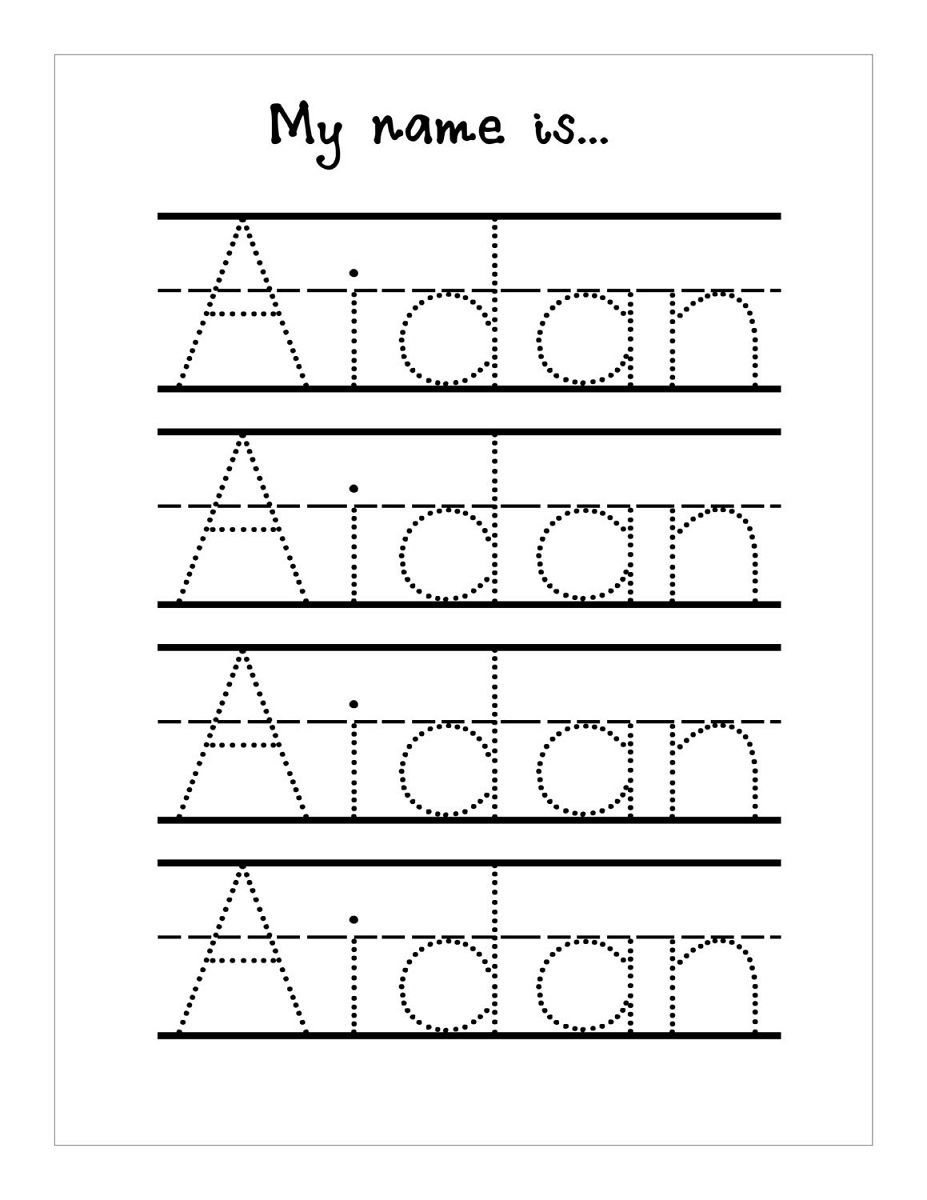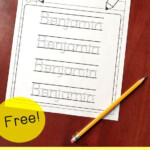Tracing Children’s Names – The name tracing exercise is an early handwriting exercise that helps children develop their handwriting abilities. It involves the child drawing letters that spell their name on dotted lines. It’s a fun and simple way to teach children how to spell their names as well as form letters.
What is the significance of name tracing?
Name tracing plays a critical aspect in the child’s development. It not only helps children learn their names, but it enhances their hand-eye coordination and motor skills. Name tracing is the basis for more complex writing.
Name Tracing: The Science behind It
Cognitive Development and Name Tracing
They’re more than simple games. The development of the cognitive abilities of a child is greatly impacted by these activities. Children learn to read and recognize letters through tracing them. This is a crucial step in the development of early literacy abilities.
Name Tracing and handwriting
Name tracing assists children in developing their handwriting. By tracing over their names on a regular basis, children learn how to control their hand movements. They also develop a muscle memory. This is essential for writing without any guidance.
How to implement Name Tracing successfully
The Right Materials
When starting with name tracing making, selecting the appropriate material is vital. Use tracing paper, a dry eraseboard to practice on that can be reused, crayons and markers that are suitable for little hands, as well as an example of the child’s initials.
Introducing the Activity
For introducing name tracing, start by showing the child their name and pointing out every letter. Teach them how to trace letters. Encourage them, and remind them that it’s fine even if they make mistakes the first few times.
Practical Tips
The process of writing a name should be enjoyable. Use glitter pens, and various colours for a fun activity. The way you praise your child’s efforts rather than the output can help create a positive environment for learning.
A novel approach to name tracing
Digital Name Tracing
Thanks to advances in technology and advances in technology, the process of name tracking now requires an increasingly digital approach. Many apps and platforms allow children to trace their names using tablets or smartphones. This is an innovative method of tracing names that is engaging and interactive.
Name Tracing Apps
There are a variety of applications such as “Name Trace,” Writing Wizard,”and “Tracing ABC” can help with name tracking. They’re both educational as well as entertaining.
Recap and final thoughts
The art of name-tracing is a vital step on the path of a child’s education. This simple activity helps improve handwriting abilities, literacy skills and cognitive development. It helps children recognize letters and understand their order. Parents and teachers can encourage name-tracing for their children by creating a positive environment, using appropriate materials, and leveraging the technology.
FAQs
- Q. What is the term used to describe the of the process?
- Name tracing aids children to learn to write letters in their names. The children trace the lines on the dotted lines, spelling their names to familiarize themselves with their letters and the sequence.
- What is the reason it’s necessary to track names?
- Name tracing helps develop motor skills, hand-eye coordination and self-identity. It also lays the foundation for more difficult writing tasks.
- Q. What are the benefits of name tracing for my child?
- A: Begin by showing the child their name and pointing out each letter. After that, demonstrate the correct way to trace over each letter. Encourage your students to do it themselves However, remind them that they are able to make mistakes.
- Yes, there are many apps and online platforms that provide name tracing. These digital tools can be fun and interactive for kids.
- Q. What are some useful tips to name tracing.
- A Idea: Create a name tracing enjoyable task. To keep it engaging you can use various colors or a glitter pen. Also, be sure to praise your child’s effort rather than the outcome to help create an environment that encourages learning.






